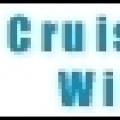Quote:
Originally Posted by delatbabel' date='23 May 2010 - 04:15 PM

Yeah, I hear what you're saying. I also have an Aries windvane which I'm very fond of. On the wind it holds a course beautifully, for days. Running downwind in light winds it tends to be less accurate. I think that the Raymarine guys need to program in one simple algorithm if it doesn't have its speed sensor data, which is:
At the moment what my S2 does is this:
* Is the boat on course? Don't care. Steer in a randomly chosen direction.
* Is the boat off course by more than what the off-course alarm is set for? If so, sound off course alarm. Give up and start steering in circles.
|
Well, it's hard to know what the problem is here: I have a Raymarine ST1000 which does roughly keep course, though I have only tested it with my steering system downwind. Observing it zig-zagging I seem to perceive that the fault is not with the control head but the fluxgate compass: the boat yaws and the off-course indication on the instrument takes a while to respond. The actual drive and rudder system respond very fast once the heading is seen to be wrong.
What my system does is: if the boat is off course, it applies some rudder. If that doesn't bring the boat back on course, apply some more. Unfortunately, since there is no rudder angle indicator, it is just guessing. When the boat is back on course it should recentre the rudder, but it doesn't know where the centre is, so it is always basically zig-zagging.
However my tiller drive is turning a trim tab which turns the trailing edge of a massive transom mounted rudder, and this brings the boat back on course even when it is 60 degress off course, since that rudder is actually bigger than my main rudder

The algorithm is supposed to learn how to control the boat according to the manual. It's probably a bit tricky on my boat because it isn't controlling the rudder directly, but via a trim tab, so there is delay while the trim tab adjustment move the tiller, especially in light winds.
I found the system had enough lag in it that I turned the dead-band off completely. That's the error tolerance which is ignored completely, by default I think it is +/- 10 degrees. That makes the drive work continuously, but it also speeds up the response. The actual sensitivity (gain: the amount of correction to apply) didn't seem to make any difference.
So I guess the question is: what kind of heading sensor do you have? Is there a rudder angle sensor? I guess you're driving a wheel which drives the main rudder?











 Linear Mode
Linear Mode






























